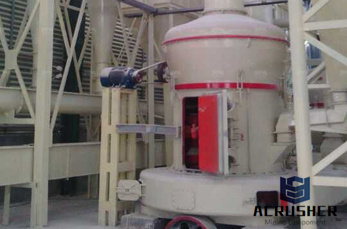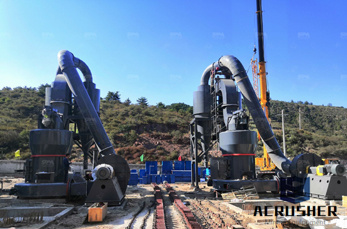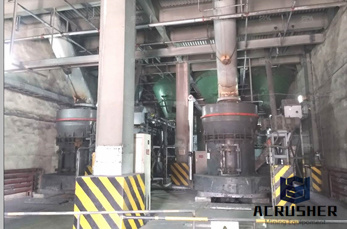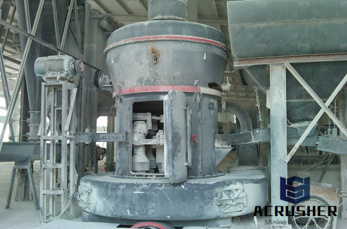(PDF) Iron Ore Pelletizing Process: An Overview
deteriorated and lowgrade iron ore has been processed. The fines resulting from the ... the sintering of ore grains ... The binder mainly used for iron ore pellets was bentonite but due to its ...
 WhatsApp)
WhatsApp)
deteriorated and lowgrade iron ore has been processed. The fines resulting from the ... the sintering of ore grains ... The binder mainly used for iron ore pellets was bentonite but due to its ...

Review of Organic Binders for Iron Ore Agglomeration Halt, S. Komar Kawatra . Department of Chemical Engineering . Michigan Technological University . Houghton, MI 49931 ©skkawatr . Date Last Edited: 5/22/2013 . Introduction Iron ore pellets are one type of ironrich, intermediate product used during primary iron and steel making.

Jun 13, 2014· Use of Iron Ore Pellets in Blast Furnace Burden Pelletizing is a process that involves mixing very finely ground particles of iron ore fines of size less than 200 mesh with additives like bentonite and then shaping them into oval/spherical lumps of 820 mm in diameter by a pelletizer and hardening the balls by firing with a fuel. It is the ...

The iron ore concentrate is now mixed and ready for the pelletizing process. Pelletizing A pellet plant contains a series of balling drums where the iron ore concentrate is formed into soft pellets, in much the same manner that one rolls a snowball, to make a pellet .

Iron ore lump, sinter, and pellets comprise the main burden of modern blast furnaces. However, sinter and pellets are now the dominant blast furnace burden, because the natural lump supply has declined dramatically due to depletion of the world''s highgrade competent iron ore resources.

bentonite application in iron ore plant. Our Purpose And Belief. LM Heavy Industry is committed to provide the global customers with the firstclass products and superior service, striving to maximize and optimize the interests and values of the customers, and build bright future with high quality. All;

The iron ore concentrate is now mixed and ready for the pelletizing process. Pelletizing A pellet plant contains a series of balling drums where the iron ore concentrate is formed into soft pellets, in much the same manner that one rolls a snowball, to make a pellet .

iron ore pellets EUROPE LKAB is the EU''s largest iron ore producer and mines around 76 PERCENT of all iron ore in the EU 90% of LKAB''s revenue comes from pellet sales LKAB is one of Sweden''s oldest industrial companies and has customer relationships dating back more than a century 125 YEARS 4,500 Around 4,500 employees in total

In steel industry and in mines, a significant amount of ultrafines waste iron oxides and iron ore fines is generated. Utilizations of these fines are required to reduce the environmental hazards and conserve the natural resources. Some of these fines are normally used in sintering practice. However ...

sible to use fluxed iron ore pellets using iron ore and lime fines as a raw material to minimize flux input in Blast Furnace as a limestone and avoid bentonite addition as binder in conventionally prepared pellets. (2) The preparation of fluxed iron ore pellets with high basicity () has been possible

Variation in physicochemical properties of iron oxide pellets using ... Bentonite and calcium hydroxide are the widely used binding materials in iron ore pelletizing plants. ... 1000 – 1200 oC, was probably due to the sintering of fine hematite particles ...addition may be explained as follows: Bentonite .

After making 8–10 mm pellet with requisite quantity of water, the pellets were coated with 50% of total iron ore fines using % bentonite in iron ore. Pellets were rolled in disc with simultaneous addition of water and bentonite containing iron ore fines. Thus, pure iron ore coating was made surroundings of the pellet.

What is Pelletization? The process of Pelletization helps converting Iron Ore Fines into "Uniform Size Iron Ore Pellets" that can be fed in the blast furnaces or in the DRI kiln (DRI). Why Pelletization? Pelletization is the only answer to a major...

Pelletizing, or balling, carried out through either a disc pelletizer or rotary drum, is a key part of efficiently and sustainably producing steel from iron ore fines of varying sources. FEECO is a leader in feasibility testing, custom disc pelletizers and balling drums, and aftermarket services for the iron ore balling/pelletizing industry.

Sintering and pelletization are the most important agglomeration technologies, in this way, in the EU27, 14 countries operate 34 iron ore sinter plants with 63 iron ore sinter strands, producing in the first decade of the twentyfirst century 130 million tons of sinter annually, on its behalf, 6 pelletization plants produce 27 million tons of ...

Iron ore pellets and Pelletizing processes. satyendra; February 23, 2013; 4 Comments ; Grate kiln process, Iron ore fines, iron ore pellets, Pelletization processes, Straight kiln process, Iron ore pellets and Pelletizing processes Pelletizing is a process that involves mixing very finely ground particles of iron ore fines of size less than 200 mesh with additives like bentonite and then ...

Compared to a fines or sinter product, iron ore pellets have the... Get Quote. Sinter plant Wikipedia. Sinter plants agglomerate iron ore fines (dust) with other fine materials at high temperature, .... and narrower softening in the melting zone, which increases the volume of the granular zone and shrinks the width of the cohesive zone. A ...

Iron Ore Pelletizing Bentonite. The need for iron ore pellets is directly connected to the steel production industry. Through the pelletizing process, iron ore fines are converted into spherical pellets, which are then suitable as feed material in blast furnaces for pig iron production.

bentonite to bind iron ore into pellets and reduce the total amount of bentonite required for a given quantity of iron ore fines. Sodium in soda ash replaces some of the calcium and magnesium in the bentonite lattice and thereby improves the binding efficiency of Cabentonite. However, it was believed that bentonite would not

8 mm. HPS feed consists of iron ore as pellet feed fines, return fines and iron and steel work remnants, filter dust, additives and binders like limestone, dolomite, bentonite and coal dust. These micro pellets are fed onto a sinter machine to produce sinter cake, which is then broken down and smelted in a .

Abstract. Pelletization is one of useful processes for the agglomeration of iron ore or concentrates. However, manganese ore fines are mainly agglomerated by sintering due to its high combined water which adversely affects the roasting performance of pellets.

Keywords: Goethite Ore, Disc Pelletizer, Iron Ore Pellet, Induration, Cold Compressive Strength Introduction Indian blast furnaces are fed with lump iron ore (10 40 mm) and sinter as burden. Sinter is a prepared burden, where iron ore fines of size 10 + .

• The pressure resistance of pellets formed by activated calcium bentonite addition is much lower than the pellets formed with Karben Sodium Bentonite. • Also, when Activated Calcium Bentonite is used as a binder alone, the wet pellet efficiency is also reduced. • Karben Pellet Bentonite is specially prepared for Iron Ore Pelletizing.

Iron ore pellets are spheres of typically 6–16 mm (– in) to be used as raw material for blast typically contain 64%72% Fe and various additional material adjusting the chemical composition and the metallurgic properties of the pellets. Typically limestone, dolomite and olivine is added and Bentonite is used as binder.. The process of pelletizing combines mixing of ...
 WhatsApp)
WhatsApp)